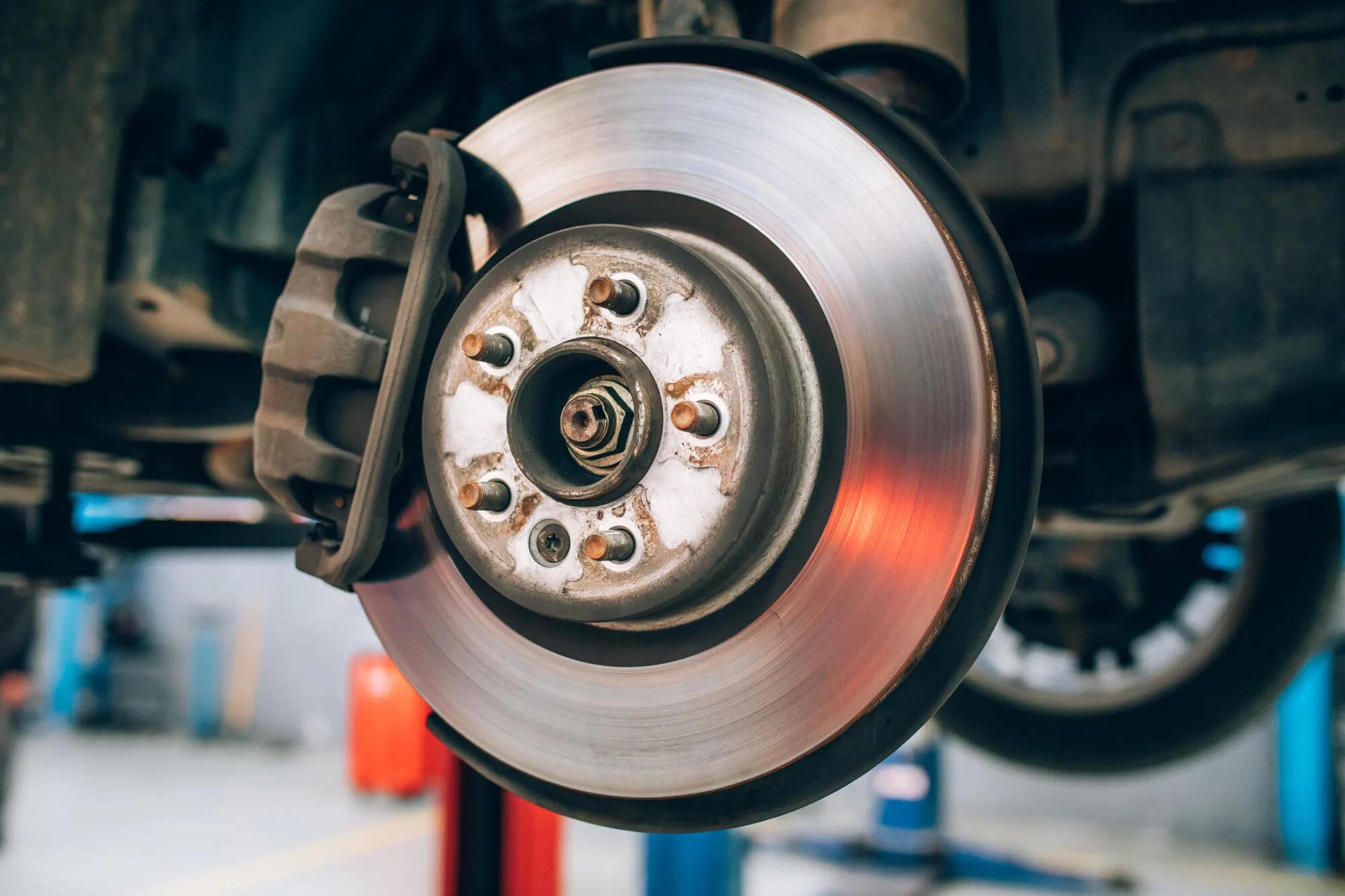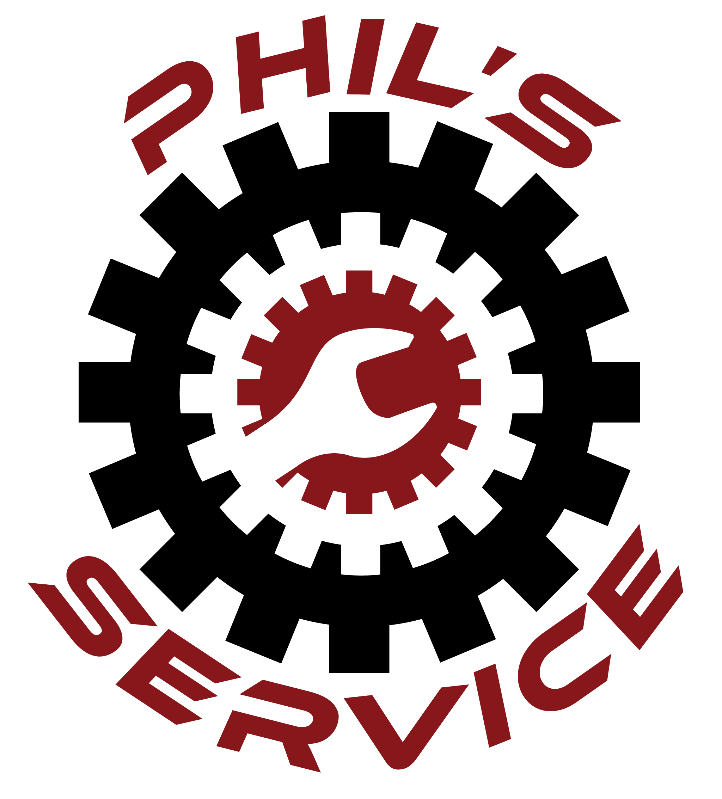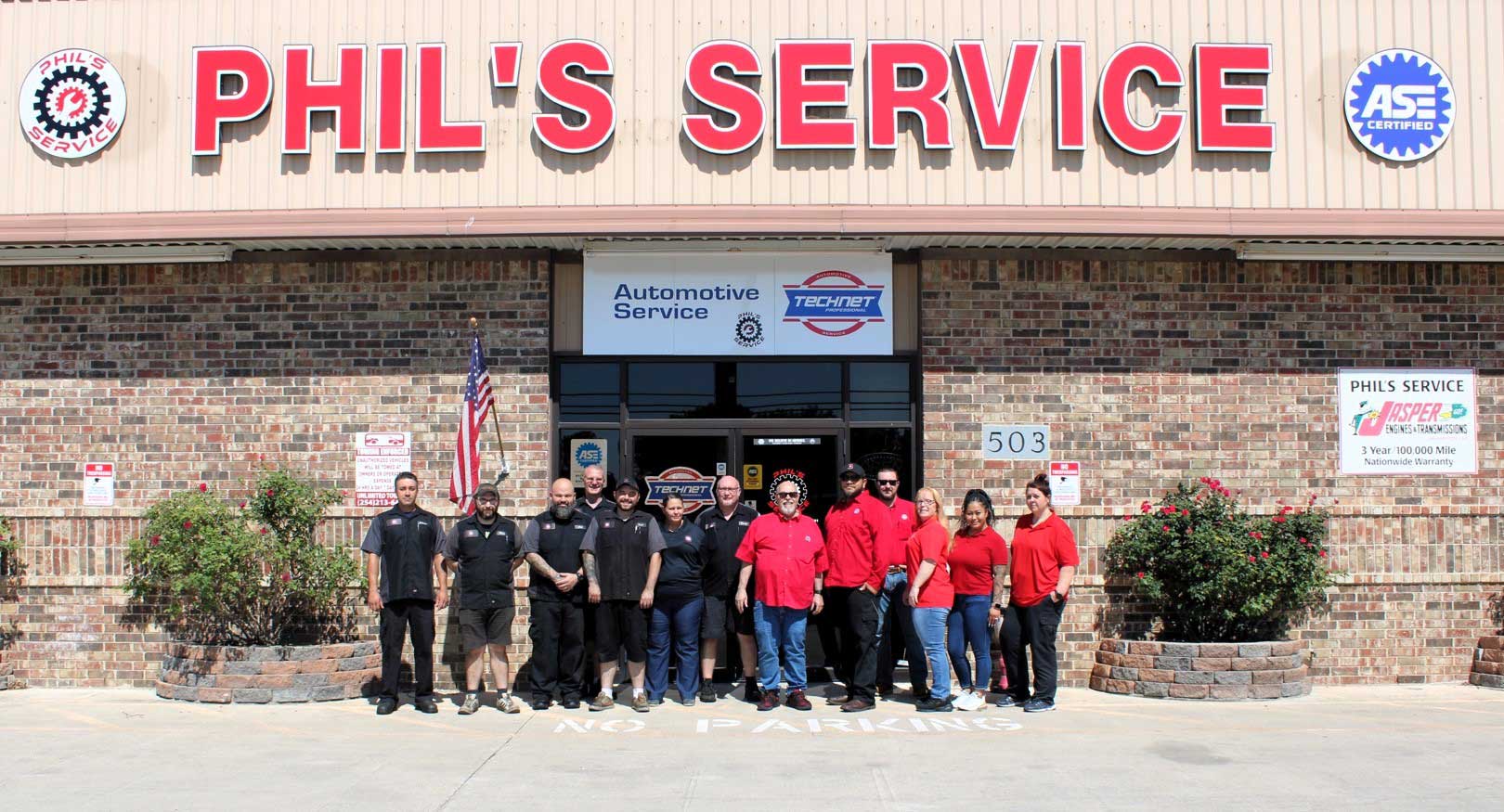Imagine cruising down a scenic mountain road, wind in your hair, and tunes blasting from the speakers. Suddenly, you approach a sharp curve, and as you hit the brakes, you're met with a spine-tingling screech and a shaky, jolting sensation.
What's going on? It might just be your brake rotors begging for a little TLC.
But don't worry! We're here to help. Let's go through the top symptoms of bad brake rotors.
1. Vibrations When Breaking
Symptoms of bad brake rotors typically manifest as vibrations or pulsations when braking. These weird vibrations can be felt in the steering wheel, brake pedal, or even the entire vehicle.
When brake rotors become worn or damaged, they can develop uneven surfaces or thicknesses. That leads to these vibrations during braking.
Another common sign of bad brake rotors is a pulsating brake pedal. When you apply the brakes, you may feel a rhythmic pulsation or shaking in the brake pedal.
This is often accompanied by a similar sensation in the steering wheel, especially during moderate to heavy braking. The severity of the pulsation can vary depending on the extent of the rotor damage.
2. Visible Rust
When brake rotors develop rust, especially in excessive amounts or in specific areas, it can lead to various problems with braking performance and safety.
In some cases, minor surface rust can be addressed through rotor resurfacing (machining) to restore smoothness and functionality. However, if the rust has caused significant damage or if there are other issues like warping or thickness variation, replacing the rotors may be necessary for optimal braking performance and safety.
3. Brake Warning Light
If you see the brake warning light on the dashboard, paying attention to other symptoms and promptly addressing the underlying problems is crucial. When it comes to replacing bad brake rotors indicated by the brake warning light, it's crucial to have the brake system inspected by a properly qualified auto mechanic as soon as possible.
Ignoring the warning light and associated symptoms can lead to even more damage to the braking system and compromise safety. Do your research to ensure you're finding the best possible auto shop in your area.
4. Weird Noises
One of the symptoms associated with bad brake rotors and weird noises is squealing or screeching. This high-pitched noise typically occurs when the brake pads come into contact with worn or uneven brake rotors.
The friction between the pads and rotors can create vibrations and produce a squealing sound, signaling potential rotor wear or damage.
Another noise you might encounter is grinding or scraping sounds. These noises often indicate metal-to-metal contact between the brake pads and severely worn brake rotors.
Grinding noises can occur when the brake pads have worn down significantly, exposing the metal backing and causing it to grind against the rotor surface. This can lead to further rotor damage and compromised braking performance.
Rattling or clicking noises during braking can also be attributed to bad brake rotors. Loose or damaged brake rotor components, such as mounting hardware or heat shields, can cause rattling or clicking sounds when the brakes are applied. These noises may worsen with braking intensity.
In many cases, if weird noises are caused by bad brake rotors, replacing the rotors along with the brake pads is advisable to restore optimal braking performance and ensure safety. Regular maintenance and inspections of your car's brake system can help identify issues early and prevent super expensive repairs or accidents related to brake failures.
5. Pedal Feels Different
When you notice differences in the pedal feel while braking, it's important to address these symptoms promptly.
A spongy brake pedal often indicates air in the brake lines or worn brake components, including brake rotors. When brake rotors are worn or damaged, they may not provide sufficient friction for the brake pads, leading to a softer or less responsive brake pedal.
A hard or stiff brake pedal can also be attributed to bad brake rotors. When brake rotors are severely worn or damaged, they may not allow the brake pads to make proper contact, resulting in a harder pedal feel. This can make it more challenging to modulate braking pressure and may require increased force on the brake pedal to get up to the desired stopping power.
6. Uneven Brake Bad Wear
You'll want to watch out for uneven brake wear.
One of the visible signs of uneven brake pad wear is variation in pad thickness across the brake rotor. You may notice that one section of the brake pad has significantly less material compared to other areas. This can occur when the rotor surface is uneven, causing the brake pads to wear unevenly as they make contact with the rotor.
Inspecting the brake pads can reveal scoring or grooves that correspond to irregularities on the brake rotor surface. These marks indicate that the brake pads have been wearing unevenly due to rotor issues such as warping, hot spots, or surface damage.
7. Brake Fluid Leaks
While brake fluid leaks can occur due to various reasons, including damaged brake lines or seals, they can also be a consequence of rotor issues.
One of the primary signs of a brake fluid leak is the presence of fluid under the vehicle, especially near the wheels or along the brake lines. This fluid is often clear or slightly yellowish in color and has a distinct oily texture.
If you notice that your vehicle's brake fluid level is consistently low, it could indicate a leak in the braking system. Checking the brake fluid reservoir regularly can help identify leaks early before they lead to more severe issues such as brake failure.
8. Burning Smell
If you smell something weird, stop driving immediately. Bad brake rotors, particularly those that are severely worn, warped, or have uneven surfaces, can contribute to overheating of the braking system during braking maneuvers.
When you apply the brakes, the brake pads create friction against the rotor surface to slow down or stop the vehicle. If the rotors are in poor condition, this friction can generate excessive heat.
Get Your Brake Rotors Replaced Today
If you're consistently having issues with your brake rotors, it's time to get them replaced.
Are you looking for auto repair in Killeen? Phil's Service is the only ASE Blue Seal-certified repair shop in town. Contact us today.
What are the Symptoms of Bad Brake Rotors and When to Have Them Replaced? Call Phil's Service for more information about brake pads.
Imagine cruising down a scenic mountain road, wind in your hair, and tunes blasting from the speakers. Suddenly, you approach a sharp curve, and as you hit the brakes, you're met with a spine-tingling screech and a shaky, jolting sensation.
What's going on? It might just be your brake rotors begging for a little TLC.
But don't worry! We're here to help. Let's go through the top symptoms of bad brake rotors.
1. Vibrations When Breaking
Symptoms of bad brake rotors typically manifest as vibrations or pulsations when braking. These weird vibrations can be felt in the steering wheel, brake pedal, or even the entire vehicle.
When brake rotors become worn or damaged, they can develop uneven surfaces or thicknesses. That leads to these vibrations during braking.
Another common sign of bad brake rotors is a pulsating brake pedal. When you apply the brakes, you may feel a rhythmic pulsation or shaking in the brake pedal.
This is often accompanied by a similar sensation in the steering wheel, especially during moderate to heavy braking. The severity of the pulsation can vary depending on the extent of the rotor damage.
2. Visible Rust
When brake rotors develop rust, especially in excessive amounts or in specific areas, it can lead to various problems with braking performance and safety.
In some cases, minor surface rust can be addressed through rotor resurfacing (machining) to restore smoothness and functionality. However, if the rust has caused significant damage or if there are other issues like warping or thickness variation, replacing the rotors may be necessary for optimal braking performance and safety.
3. Brake Warning Light
If you see the brake warning light on the dashboard, paying attention to other symptoms and promptly addressing the underlying problems is crucial. When it comes to replacing bad brake rotors indicated by the brake warning light, it's crucial to have the brake system inspected by a properly qualified auto mechanic as soon as possible.
Ignoring the warning light and associated symptoms can lead to even more damage to the braking system and compromise safety. Do your research to ensure you're finding the best possible auto shop in your area.
4. Weird Noises
One of the symptoms associated with bad brake rotors and weird noises is squealing or screeching. This high-pitched noise typically occurs when the brake pads come into contact with worn or uneven brake rotors.
The friction between the pads and rotors can create vibrations and produce a squealing sound, signaling potential rotor wear or damage.
Another noise you might encounter is grinding or scraping sounds. These noises often indicate metal-to-metal contact between the brake pads and severely worn brake rotors.
Grinding noises can occur when the brake pads have worn down significantly, exposing the metal backing and causing it to grind against the rotor surface. This can lead to further rotor damage and compromised braking performance.
Rattling or clicking noises during braking can also be attributed to bad brake rotors. Loose or damaged brake rotor components, such as mounting hardware or heat shields, can cause rattling or clicking sounds when the brakes are applied. These noises may worsen with braking intensity.
In many cases, if weird noises are caused by bad brake rotors, replacing the rotors along with the brake pads is advisable to restore optimal braking performance and ensure safety. Regular maintenance and inspections of your car's brake system can help identify issues early and prevent super expensive repairs or accidents related to brake failures.
5. Pedal Feels Different
When you notice differences in the pedal feel while braking, it's important to address these symptoms promptly.
A spongy brake pedal often indicates air in the brake lines or worn brake components, including brake rotors. When brake rotors are worn or damaged, they may not provide sufficient friction for the brake pads, leading to a softer or less responsive brake pedal.
A hard or stiff brake pedal can also be attributed to bad brake rotors. When brake rotors are severely worn or damaged, they may not allow the brake pads to make proper contact, resulting in a harder pedal feel. This can make it more challenging to modulate braking pressure and may require increased force on the brake pedal to get up to the desired stopping power.
6. Uneven Brake Bad Wear
You'll want to watch out for uneven brake wear.
One of the visible signs of uneven brake pad wear is variation in pad thickness across the brake rotor. You may notice that one section of the brake pad has significantly less material compared to other areas. This can occur when the rotor surface is uneven, causing the brake pads to wear unevenly as they make contact with the rotor.
Inspecting the brake pads can reveal scoring or grooves that correspond to irregularities on the brake rotor surface. These marks indicate that the brake pads have been wearing unevenly due to rotor issues such as warping, hot spots, or surface damage.
7. Brake Fluid Leaks
While brake fluid leaks can occur due to various reasons, including damaged brake lines or seals, they can also be a consequence of rotor issues.
One of the primary signs of a brake fluid leak is the presence of fluid under the vehicle, especially near the wheels or along the brake lines. This fluid is often clear or slightly yellowish in color and has a distinct oily texture.
If you notice that your vehicle's brake fluid level is consistently low, it could indicate a leak in the braking system. Checking the brake fluid reservoir regularly can help identify leaks early before they lead to more severe issues such as brake failure.
8. Burning Smell
If you smell something weird, stop driving immediately. Bad brake rotors, particularly those that are severely worn, warped, or have uneven surfaces, can contribute to overheating of the braking system during braking maneuvers.
When you apply the brakes, the brake pads create friction against the rotor surface to slow down or stop the vehicle. If the rotors are in poor condition, this friction can generate excessive heat.
Get Your Brake Rotors Replaced Today
If you're consistently having issues with your brake rotors, it's time to get them replaced.
Are you looking for auto repair in Killeen? Phil's Service is the only ASE Blue Seal-certified repair shop in town. Contact us today.


